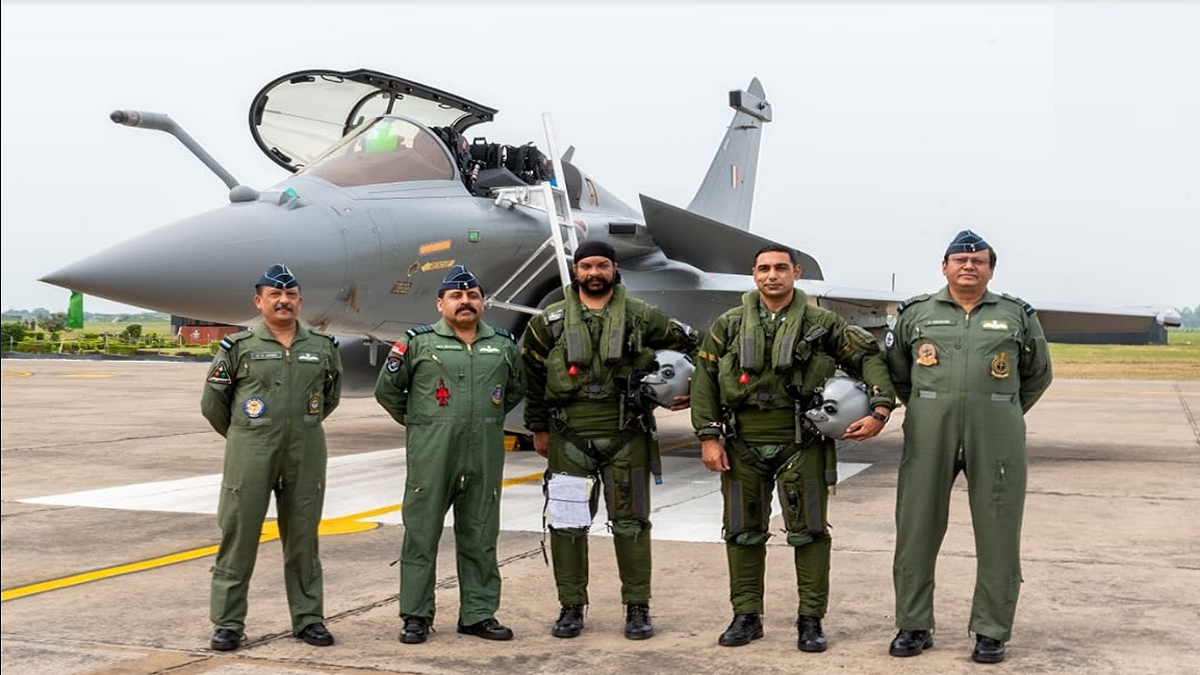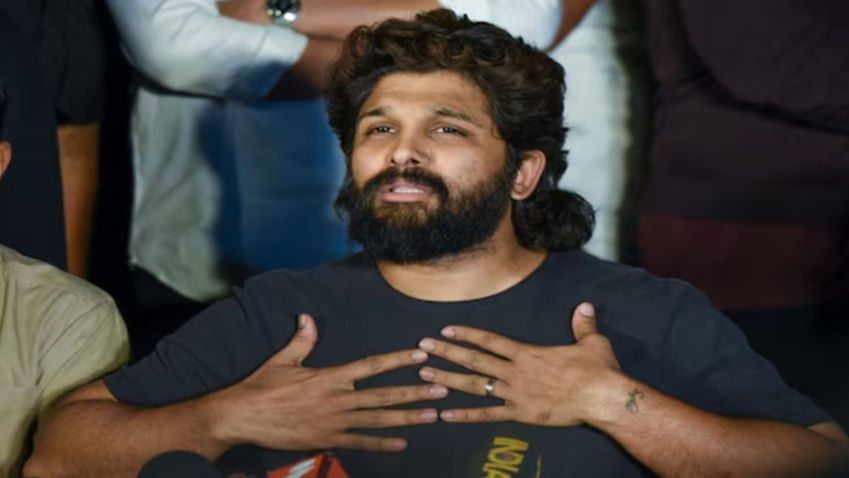Earlier this week two Sukhois escorted five Rafale fighter jets in the Indian skies. It was a spectacular moment, which brought joy and filled every Indian’s heart with pride. Even the media newsrooms were abuzz and excited about the arrival of the new generation air power.
The touchdown of the first instalment of the new-generation fighter aircraft brought about a much-needed feelgood factor in the backdrop of Chinese tension at Ladakh. The magnificent aircraft, which are now part of the Indian Air Force arsenal, are known for their deadly ability to strike air-to-air targets from up to 150 km. They bring with them a sense of security.
They can safely hit land targets 300 km within enemy territory. The French aircraft are the first major air defence acquisition in 23 years after Sukhoi jets were imported from Russia. While China kept quiet when this event played out, Pakistan’s response was predictable.
Anything which makes India powerful is a thorn in Pakistan’s flesh. A spooked Pakistan Foreign Ministry reacted by urging the world community to take note of “India’s efforts to amass military capabilities beyond its genuine security requirements.” Clearly, Pakistan is rattled with the development especially in the backdrop of the beating it got in Balakot.
The late President A.P.J. Abdul Kalam Kalam’s reply to a student he once gave is a betting reply to Pakistan. When a student asked him why a peace-loving person like him tasked his country’s scientists and engineers to build missiles, he replied: “In the 3,000-year history of India, barring 600 years, the country has been ruled by others. If you need development, the country should witness peace, and peace is ensured by strength. Missiles were developed to strengthen the country.” Historically India has never overemphasised its defence needs over the development. It has only acquired what was required.
It is ironical though that India has to repeatedly remind the world community that it is a peace-loving country. But when push comes to shove India knows how to defend itself. There was a time when India did not get support from the world to enhance its weapon capability. Yet under the leadership of Kalam India developed missile, submarine and nuclear weapons technology.
The multi-billion Rafale purchase for the country’s self-defence is much required and gives an edge over the inimical neighbours. But this need also brings an understanding of the need for indigenisation of defence technology. Prime Minister Narendra Modi had given a major push in direction under the Make in India plan after he took over in the first term.
The concern is while India is importing new-generation fighter aircraft from France, China is making aircraft of matching caliber in its own country. This has been possible due China’s shrewd use of dual-use technology it has acquired from the US over the decades. India needs to harness this aspect.
As we know dual technology could be used for both peaceful purposes and development of weapons, for example nanotechnology. While over the decades the US became majorly dependent on China for outsourcing manufacturing it had no option but to transfer the technology. China not only used the technology transfer to enhance its manufacturing sector but also to build a robust defence capability. China over the decades has been discreetly using the US knowhow to develop offensive warfare technologies. It is another thing that their technology has not been war tested for a long time.
India had made several strides in the acquisition of dual use technology from the US and other countries since the 1980s. Over the years it has developed knowhow to develop advanced systems and technologies such as nanotechnology, information technology, communications satellites, artificial intelligence, robotics, and unmanned systems along with nanoweapons.
When India carried out nuclear tests in 1998, the world woke up to the country’s capabilities both in terms of its scientists and use of technology. It raised several eyebrows. Following the tests India faced a tough time of the US sanctions which continued until President George W. Bush after 9/11 terrorist attacks decided to waive off the sanctions. It was though a tactical move but following this decision India also got its share of dual-use technology transfer from the US.
US Undersecretary of Commerce Kennith Juster and Indian Foreign Secretary Kanwal Sibal met to establish the US-India High Technology Cooperation Group, which sought to stimulate bilateral hightechnology commerce and strengthen the relations between the two countries.
In this understanding the two countries understood the importance of enhancing trade in ‘dual-use’ items, including controlled ‘dualuse’ goods and technologies while protecting the national security and foreign policy interests of both the countries.
In spite of India having a good track record in this regard when Kanwal Sibal travelled to Washington he was asked about critical remarks coming out of the US Congress regarding nuclear, high-tech, and space technology transfers between US and India. He gave a befitting reply. He said in the US policies are not simply made by the administration; they are also made by Congress. So there is tension within the US system.
He added, India is not a member of Nuclear Proliferation Treaty and it does not subscribe to Missile Technology Control Regime. Yet, there is to be nuclear and space cooperation. Since India is not a party to the instruments that exist to deal with non-proliferation or missile technology, there is a conundrum. He had said; “Our answer is we are what we are.”
While India has been under close scrutiny of usage of dual-use technology, China has had its way all along. A report in 2003 stated that China ranked third in the world in the number of patent application cases concerning nanotechnology, only behind the US and Japan. But one year later China owned 12 per cent of the world’s total nanotechnology patents.
When the developments of China’s military programme became known, the US Defence Department in its annual report said Beijing has and will continue to enhance its satellite tracking and identification network — the first step in establishing a credible anti-satellite weapon capability. China could only destroy or disable satellites only by launching a ballistic missile or space launch vehicle armed with a nuclear weapon. However, there are many risks associated with this method. On the basis of interest China showed in this field, DIA had a strong sense that Beijing was eventually capable of developing a laser weapon capable of damaging or destroying satellites.
This realisation had also prompted India to take up dual-use technology more aggressively. Realising its mistake of unbridled dualuse technology transfer to China, the US became inclined to aid India in the use of transfer of dual technology as a balancing act. However, India has not been able to benefit from the transfer of technology as much as China did.
While in the short term there is a need to strengthen defence capability through necessary imports like Rafale, in the long run India must indigenise its capabilities in the sector. In his inaugural speech at Defexpo 2020, PM Modi announced formulation of a long-term integrated plan for 15 years. If such a programme were to succeed, then it is essential to take industry on the same page well in advance about armed forces requirements with specifications and timelines.
The PM also emphasised that the government is working earnestly to promote defence manufacturing in the private sector. He informed of a slew of measures which have been initiated to make it easier for the private industry to have a stake in defence manufacturing including the decision to open up DRDO patents free of cost to Indian private manufacturers.
During the Defexpo unprecedented 1,000 exhibitors and 15 lakh visitors visited the exhibition of live demonstrations of military capability in mock operation settings. Defence Ministers from 30 countries also participated.
India has increased its defence budget from Rs 3,40,921 crore in 2017-18 to Rs 4,71,378 crore for 2020- 21. This increase becomes important among the competing demands of modernisation and sustenance. India faces multiple threats and needs to be prepared for full-spectrum war.
In order to achieve this goal India must make best use of available dual-use technology. Simultaneously, it must also develop indigenous capability. This could happen by bringing on board able scientists. There is a need to make extra effort to retain capable Indian scientists in the country by giving them adequate incentives. Otherwise, a sizable population of Indian scientists land in the US and Europe to develop dual-use technology, which would eventually take decades to reach India.
The defence sector must also promote private partnerships by removing the bureaucratic hurdles. The relationship should have a clearly demarcated expectations and delivery mechanism.
India needs to enhance its road and infrastructure in forward areas on priority basis. A lot of work has already begun in this direction but it needs to be expanded all along the borders. The country also needs to upgrade its missile systems and further upgrade space technology, especially with regard to surveillance satellites. Last but not the least, cyber warfare is one area where the country has good capability but it needs more push for getting an edge in this area as well. Imagine if arrival of Rafale aircraft brings so much happiness to Indians, the joy will multiply several times when the country makes its own similar aircraft.







